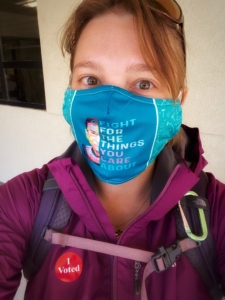Reflections from a 2020 Election Judge
I chose to serve as an election judge during the 2020 election. I decided to do this for three reasons: 1) to learn more about the rules that keep our elections fair, 2) to contribute and participate more in the election process, and 3) to learn more about the election process. At the time, some politicians were spreading false information about the election process, so I decided to do my own research and draw conclusions from what I learned. Becoming an election judge was part of my research.
I completed the paperwork to be an election judge, participated in training on how to check-in and register voters, how to count and keep account of all ballots, and in general how to keep the election fair by following the rules. Additional information on how polling places are organized for Minnesota can be found at https://www.sos.state.mn.us/elections-voting/election-day-voting/. A lot of what I describe below regarding my experience and the rules I needed to follow to be an election judge is provided on the page linked above.

This selfie was taken just after I cast my ballot during the early-voting period in Minnesota, October 2020.
Election day started at 6am. We set up the poll pads (iPads loaded with the voter registration software) that are used to register and log in voters, prepared ballots for the voters to use (this included counting the ballots in each pack and recording how many were there), ensured the ballot-counting machines were correctly programmed and ready for the day, and set up signs, arrows, and other equipment to help guide voters through the line and the poll area.
Voters were lined up nearly 30 minutes before we opened at 7am. I spent the first 3 hours sanitizing voting booths between voters and directing voters to the booths and then to the ballot-counting machines to deposit their ballot. We were very busy for the first 3 hours of the day. The energy was upbeat and uplifting. Most everyone was polite, patient, and just interested in casting their ballot, having their say in our government, and then going on with their day. Since where I live is a relatively small town (~25,000 people) I knew many of the people coming in to cast their ballot. Seeing familiar faces made the morning even better.
I spent the middle part of the day working the poll pads, logging in voters, verifying their information, and directing them where to pick-up a ballot. I registered about 20 voters during this time as well, many of them first-time voters. The process to register a voter was defined in the poll pad. The person had to provide proof of their identity and residency. We had to note the documentation they used to prove this information when we registered them. Everything was documented, regimented, and governed by rules. There was a paper trail as well. Every voter signed a slip of paper before they were given a ballot. Another slip of paper indicating they were given a ballot was also kept. At the end of the day, the number of ballots issued had to match the number of voters who were logged into the poll pads and the number of ballots issued. If a ballot was “spoiled,” meaning a voter made a mistake when filling it out, it was also noted, tracked, and kept in specially marked envelopes to prevent them from being mixed with the valid ballots submitted. Voters were NOT allowed to have their vote counted twice. The poll pad noted if someone had already voted absentee and would not allow another ballot to be issued for that voter. The poll pads also noted if a voter needed to be “challenged.” To be challenged means that a question or other piece of information needs to be clarified/proven regarding the voter’s eligibility. The poll pad tells the poll worker what question to ask/information to collect from the voter. This challenge must be addressed and in a specific manner with proper documentation before the voter is allowed to complete their ballot.
Over the course of the day, we handled between 3,500 and 4,000 voters. Since I spent the last hour of my 14+ hour day sanitizing voting booths, I didn’t check the information on the poll pads to get a final count. The polls closed at 8pm. Once we collected the paperwork from the day, secured the ballots in boxes that were zip-tied shut to prevent tampering, and broke down the voting booths and poll pads, my day as an election judge was complete.
What I witnessed on election day was 40-50 election judges who just wanted to make election day safe and fair. They wanted to do their best so people could come in and fairly cast their vote. They wanted the results to reflect the voice of the voters, not any particular candidate. There were election judges from multiple political parties, working together to help Americans vote and keep the process fair so the voices of the voters could be heard. No voter was allowed to submit multiple ballots, no ballots were magically created to favor a candidate. Ensuring that all ballots are counted is not fraudulent. Democracy takes time and verifying and counting all ballots is one of those tasks to ensure that the people get to have their voice heard fairly. Some states accept mail-in ballots up to a week after the election as long as they are postmarked by election day. These ballots are not “late” simply because they arrived after election day. As long as they are received in the time frame outlined by the voting laws of that state, they can be counted.
It is a modern idea that we should know the results of our elections on election day. The reality is that we have never had the final election results on election day. The results provided to us on election day are mostly mathematical predictions of who is most likely to win. The final vote counting has always stretched on weeks after election day. Just because we don’t “know” who won the election on election day isn’t a sign of voter fraud. It’s a sign that a lot of people voted and that election officials are being very careful to verify and count every vote to ensure a fair election. This is the foundation of our democracy.
What my research told me was that there are many checks and balances in place to ensure our elections are fair. While I can’t speak to specifics in other states, the votes cast in Minnesota were done so fairly based on the rules in place and my observations as an election judge. Rather than listen to others who have their own agenda, I had experience and information that I gathered myself to tell me the truth.
I encourage you to learn more about the voting regulations for your state and serve as an election judge at least once to see how the process works first hand. It is an amazing way to support our democracy, keep our elections fair, and educate yourself on how our elections laws are structured and the votes of the people are counted and protected from fraud.

 © Catherine Haslag
© Catherine Haslag